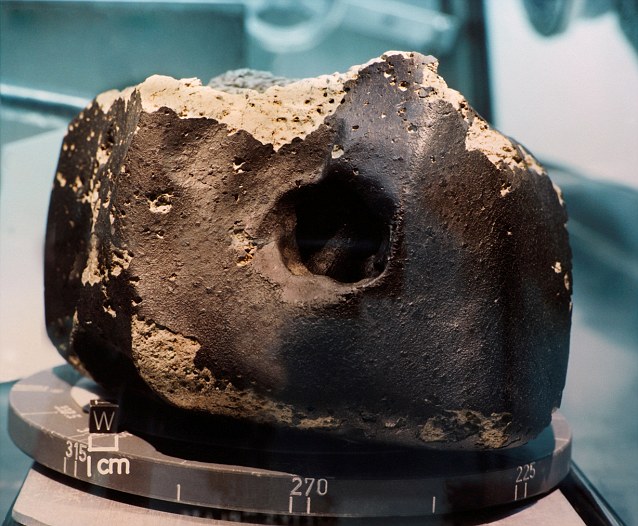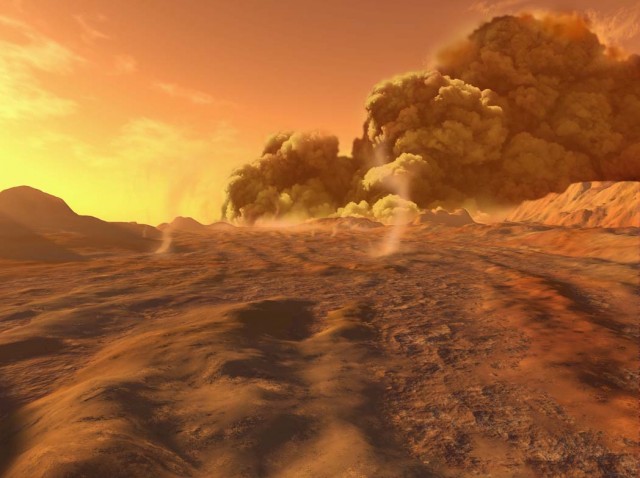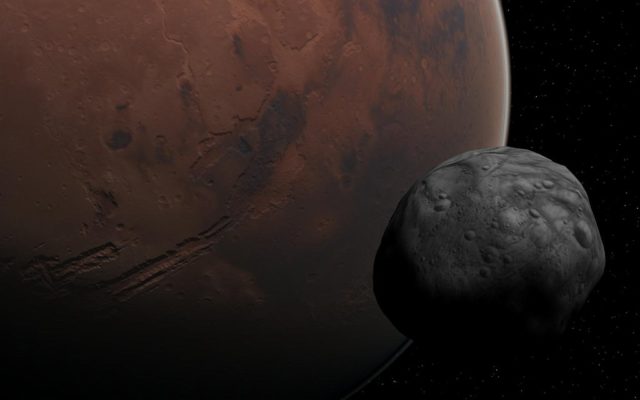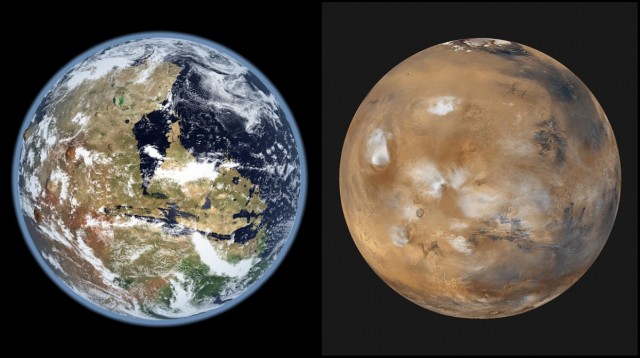There’s something magical about the planet Mars that easily catches our eye and piques our interest. Whether it’s the blood-red hue, its similarity to Earth, or the possibility that we may one day be able to live on it, we always seem to find something new to love about our red neighbor.
There’s a lot more to the planet than you may know however. Such as …
10. Mars Has Lower Gravity Than Earth
People suffering from obesity would be delighted to know that there is a very simple yet highly effective way of losing tremendous amounts of weight instantly. There’s no need for diets, exercise, pills, or even surgery. All they need to do is go to Mars.
Mars has lower gravity than Earth. To be exact, Martian gravity is 62% lower than that of our own planet. This simply means that a person weighing 220 pounds here on Earth would weigh around 87 pounds on Mars. That’s a difference of 133 pounds! And bouncing around an alien planet sounds way more fun than munching on salad.
Of course, the weight loss is artificial, as weight and mass are two very different things. Basically, gravity is determined by two important factors: mass and energy. The more mass and energy a planet has, the more powerful its gravity is. Earth is 1.8794 times bigger than Mars, so it has more mass and energy than the Red Planet. As such, it has stronger gravity. The more gravity a planet has, the “heavier” its inhabitants become.
If you’re curious to know how much you weigh on Mars, then head over to this page.
9. Mars Has Some Debris Here on Earth
As of today, there are 100 known Martian meteorites found scattered all over the Earth. For many years, scientists strongly claimed that these meteorites were of Martian origin, but they had no conclusive evidence to prove the veracity of their claims.
However, just recently, NASA’s Mars Curiosity rover made a remarkable discovery that helped scientists proved, once and for all, that these Martian meteorites, such as the Black Beauty and the NWA 7533, indeed originated from Mars. Mars’ atmosphere contains two argon isotopes: argon-36 and argon-38. Aside from Mars, these two argon isotopes are also found elsewhere in the solar system. NASA’s Curiosity rover discovered that there is a ratio of 4.2 argon-36 to every single atom of argon-38 in Mars’ atmosphere (4.2 to 1). In connection with the Martian meteorites found here on Earth, scientists analyzed them and came up with the measurement of 3.6 to 4.5 atoms of argon-36 to very single atom of argon-38 (3.6 – 4.5 to 1).
In simpler terms, the argon ratio found on Mars’s atmosphere is nearly identical to the argon ratio found in the meteorites discovered here on Earth, proving that they are indeed of Martian origin.
8. Mars Has Spring, Summer, Fall, and Winter
Just like Earth, Mars has four seasons. But unlike our planet, the seasons in Mars don’t have the same length. In the northern hemisphere of the Red Planet, spring lasts for 7 months, summer for 6 months, all for 5.3 months, and winter for 4 months.
Mars’ axis, like that of the Earth’s, is tilted away from the Sun. In fact, the Red Planet’s tilt is much greater than that of the Earth. Earth’s axis tilt is only 23 degrees, while Mars’ is 25 degrees.
Aside from the big four, Mars experiences two other seasons, called the perihelion and aphelion. Unlike the Earth, Mars’ orbit is greatly elliptical, which means that its distance from the sun is unstable. Perihelion is the season where Mars is closest to the Sun, while aphelion is when it is in its farthest. We don’t experience these two additional seasons because Earth’s orbit is almost perfectly circular. This simply means that our planet’s distance from the sun stays nearly the same throughout the year.
7. Mars Has the Biggest, Most Violent Dust Storms in the Solar System
People planning to colonize Mars might have an extremely difficult time succeeding in inhabiting this planet due to its big, violent dust storms. Mars might be small, but it sure is capable of producing the largest and most destructive dust storms in our solar system. NASA scientists first observed the violent storms in Mars through photos sent by Mariner 9 in 1971. This spacecraft was expected to send close-up pictures of the Red Planet, but the scientists were disappointed when it transmitted photos of a gigantic, violent dust storm ravaging the planet. It took a month before the storm subsided, and Mariner 9 was able to take and send back clear photos.
Scientists don’t know exactly why the dust storms in Mars are big, violent, and last for a long time. However, they do know that sunshine provides the fuel needed to create these destructive dust storms. Theoretically, what happens is that the dust particles present in Mars’ atmosphere absorb sunshine. They then raise the temperature of the atmosphere surrounding them. Afterwards, these heated dust particles travel to cold regions while produce strong winds simultaneously. Eventually, these winds gather more dust from Mars’ surface, and as a result, the temperature in the atmosphere increases even further. And since Mars is a global desert, it has an unlimited source of dust, hence the endless storms.
6. Mars Is a Two-Faced Planet
One very interesting characteristic of the Red Planet is that it has two faces: its northern and southern hemispheres are extremely different from each other. Mars is like two planets combined into one. The northern hemisphere of Mars is smooth and flat while its southern hemisphere is very rugged, consisting of numerous mountains and craters. Aside from that, the southern hemisphere has a thicker crust compared to that of the northern hemisphere.
There are many theories explaining the disparity between Mars’ northern and southern hemispheres. However, one highly plausible explanation that scientists have recently proven is that a single asteroid impact might have caused the duality of Mars’ appearance. Basing on the data provided by the Mars Global Surveyor and NASA’s Mars Odyssey, scientists were able to discover a huge crater hidden below a lava found in the northern hemisphere. This crater is gigantic, as big as Europe, Asia, and Australia combined! After finding this crater, scientists ran a series of computer-simulated impacts to find out the size and velocity of the asteroid capable of creating such a massive crater. They came up with an asteroid that is the same size as Pluto and travelling at the speed of 32,000 kilometers per hour, which might have caused Mars to have two faces.
5. Mars Has the Biggest Volcano and the Tallest Mountain in the Solar System
We all know that Mt. Everest is the tallest mountain here on Earth. Now, imagine a mountain that is three times taller. That would be the tallest mountain in the Solar System—Olympus Mons of Mars. In addition to being the tallest, Olympus Mons is also considered the biggest volcano in the Solar System.
One theory that explains why Mars has many massive volcanoes like Olympus Mons is that its tectonic plates, or crust, rarely moves. This inactivity in tectonic plate movement allowed the magma that erupted from Olympus Mons and other Martian volcanoes to gather in the same surface. Eventually, these volcanoes stopped spewing magma after the Red Planet’s core cooled off. And without magma, Olympus Mons and other Martian volcanoes stopped increasing in length and size.
4. Mars Is Going to Kill One of Its Moons in the Future
Mars has two moons, Phobos and Deimos. Out of these two, Phobos is going to be annihilated by Mars in the future. Compared to Deimos, Phobos is a lot bigger, with a diameter of 27 x 22 x 18 kilometers. One interesting fact about this Martian moon is that it orbits Mars three times daily, at the distance of only 9,378 kilometers! This distance is significantly lower compared to that of the Earth’s moon, which travels around our planet at the safe distance of 384,000 kilometers.
NASA scientists have calculated that every 100 years, Phobos is getting closer and closer to Mars at the alarming rate of 1.8 meters. Based on this movement, NASA has theorized that Phobos only has 50 million years left to live. It will ultimately dissolve into a ring or completely crash into the Red Planet.
3. Mars Once Had Rivers, Lakes, and an Ocean
When Giovanni Sciaparelli created the first map of the Red Planet in 1877, he included certain land features which he called canali, or “channels” in English. However, this word was mistranslated in some books — instead of “channels,” canali was translated into “canals”. This mistake led many people to believe that Mars had water. This belief was refuted when NASA’s Mariner proved that these “canalis” were just optical illusions.
However, recent findings made by scientists show that Mars indeed once harbored water. In fact, it once had rivers, lakes, and an ocean. New evidences prove that the McLaughlin Crater found on Mars might have been a lake billions of years ago. This new claim was made after scientists found remnants of carbonates and clay on the McLaughlin Crater. Clay and carbonates are produced when there is water.
In addition, the Mars Express, which was sent by the European Space Agency (ESA), has found sedimentary deposits on Mars’ surface. These Martian sedimentary deposits might prove that Mars once had a big ocean billions of years ago. If Mars had a big ocean, then what happened to its water? There are two possible explanations presented by Dr. Jeremie Mouginot of the University of California. According to him, the water in this big Martian ocean might have changed into vapor or have been transformed and then hidden in a frozen state under the surface of the Red Planet.
2. Mars Was Once Believed to Be Inhabited
If you tell people today that Mars is inhabited, they will surely laugh at you and tell you that you’re a fool. But if say the same piece of information a hundred years ago, people would have definitely believed you. Yes, people from the past strongly believed that the Red Planet was inhabited by Martians.
This false belief all started when Giovanni Schiaparelli, as stated above, created the first map of Mars. The land formation he saw on the surface of Mars, which he called “canali”, led many people to believe that Mars had water and inhabitants. This claim was further strengthened when, in 1888, people saw bright flashes on the surface of Mars. This bizarre phenomenon led many scientists to publish articles and books about the Red Planet. One particular book that contributed significantly to the belief of the existence of Martians was Camille Flammarion’s La planète Mars et ses conditions d’habitabilité. After reading this book, Percival Lowell, a wealthy man from Boston, became obsessed with Mars. He devoted his life to studying Mars, and he eventually came up with his own map of the Red Planet, which also featured canals. He published his findings in various magazines, newspapers, and repots. Lowell’s contributions further made the notion that Martians existed more famous to the public.
In addition, this false belief was further solidified when two men claimed that they were contacted by Martians. Many people believed them. In fact, the United States Navy strongly believed their claims that they agreed to help in contacting the allegedly existing Martians. Of course, they were unsuccessful in their quest of creating contact with the Red Planet dwellers since, as we all know, they do not exist.
1. Mars Might Have Been the Original Source of Life
While this claim might initially be very difficult to believe in, there actually is a legitimate study that supports it. Steve Benner of The Westheimer Institute for Science and Technology in Florida believes that life on Earth might have started on Mars. Scientists believe that life started on Earth around 3.5. billion years ago, and that two elements—boron and oxidized molybdenum—were needed in order to give it the necessary kick start.
However, during the period of time when life on Earth was supposed to have begun, boron and oxidized molybdenum were nonexistent. At this time, the Earth had very little oxygen, and this element is needed for the creation of oxidized molybdenum. Furthermore, our planet was completely covered in water, and boron can only exist in places that are extremely dry.
Benner’s theory suggests that oxidized molybdenum and boron might have originally come from Mars. They eventually came to our planet by riding on Martian meteorites and asteroids. Furthermore, these Martian meteorites were examined, and it was discovered that they contained boron. This finding further proves that Mars might have truly been the original source of life.










3 Comments
awesome
is rly red?
According to the Jet Propulsion Laboratory… kinda. The dust and rocks on Mars have a good bit of iron, and iron turns red in the presence of oxygen (there are traces of O2 on Mars).
However, when you’re actually on planet, it depends on where you land. Some places are brown or tan or yellow or green, depending on the minerals in the ground. The most common color planetwide, however… is butterscotch.
https://www.sherwin-williams.com/homeowners/color/find-and-explore-colors/paint-colors-by-family/SW6377-butterscotch/